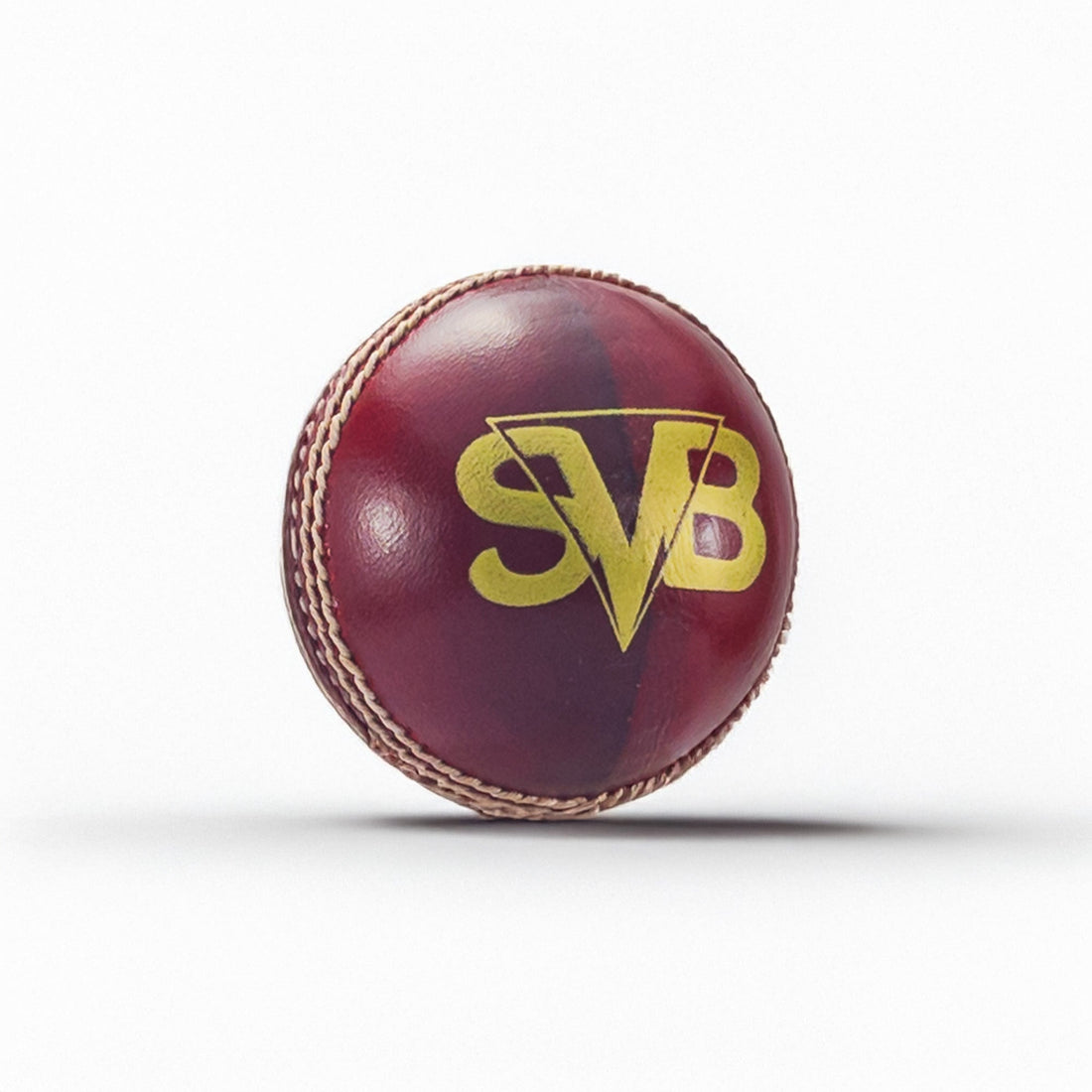
Cricket Leather Ball Weight & Sizes: 156g vs 142g vs 135g
Share
Cricket Ball Weights Explained – 156g vs 142g vs 135g
What is the weight of a cricket ball? It depends on who’s playing. The official cricket leather ball weight varies across men’s, women’s, and junior cricket — from 156g to 135g. Getting this right isn’t just about rules; it’s about safety, performance, and skill development. This guide covers 156g vs 142g vs 135g differences, ICC regulations, and real-world usage.
Why Ball Weight Matters
- Performance: 156g balls generate bounce & reverse swing; 135g–142g improve control.
- Development: Correct weight builds proper grip, seam, and batting timing.
- Safety: Reduces shoulder/elbow strain in young players.
- Regulation: ICC mandates specific weights for each category.
Example: A 20g jump from a 135g junior ball to a 156g men’s ball = ~15% more mass. Over 6 overs, a 13-year-old bowler’s arm absorbs hundreds of kilos of extra load.
ICC Laws & Standard Weights
As per Law 4 of the MCC Laws of Cricket (adopted by ICC & BCCI):
| Category | Weight (g) | Circumference (cm) | Typical Use |
|---|---|---|---|
| Men’s | 155.9 – 163.0 | 22.4 – 22.9 | Tests, ODIs, T20s |
| Women’s | 140.0 – 151.0 | 21.0 – 22.5 | Women’s cricket |
| Junior (U13/U15) | 133.0 – 144.0 | 20.5 – 22.0 | Youth matches |
156g Cricket Ball – Men’s Standard
- Official use: Men’s Tests, ODIs, T20s
- Weight: 156g (5.5 oz)
- Performance: Durable, supports swing, extra bounce
- Players: Men, boys 16+
- Examples: Dukes (England), SG (India), Kookaburra (Australia)
Study (Journal of Sports Sciences, 2016): Switching from 142g to 156g increased seam deviation by 10–15%.
142g Cricket Ball – Women’s & Transition Youth
- Official use: Women’s internationals
- Weight: 142g (5.0 oz)
- Performance: Easier grip, less strain, still swings
- Players: Women, boys 13–15, girls 15+
- Examples: Standard in Women’s World Cup
ECB youth trials: Bowlers with 142g balls showed 7% higher consistency and fewer injuries.
135g Cricket Ball – Junior Standard
- Official use: U11–U13 cricket worldwide
- Weight: 135g (4.75 oz)
- Performance: Builds confidence, safer for young joints
- Players: Boys U11–U13, girls U13 & below
- Examples: Used in BCCI & ECB junior leagues
Sports Medicine Journal (2018): Injury risk doubled in U13s bowling with 156g compared to 135g.
Ball Weights by Format
- Tests: 156g (men), 142g (women)
- ODIs: Same as Tests; white balls, two new per innings
- T20s: Same weights; white balls wear faster
Key point: Red, white, and pink balls weigh the same; only visibility and lacquer differ.
Quick Comparison
| Weight | Use | Age/Format | Units |
|---|---|---|---|
| 156g | Men’s Tests/ODIs/T20s | 16+ boys, men | 156g ≈ 0.156kg ≈ 5.5oz |
| 142g | Women’s internationals | 13–15 boys, 15+ girls | 142g ≈ 0.142kg ≈ 5.0oz |
| 135g | Junior cricket | 11–13 boys, U13 girls | 135g ≈ 0.135kg ≈ 4.75oz |
FAQs: Cricket Ball Weights
Q1: What is the weight of a cricket ball?
156g (men), 142g (women), 135g (juniors).
Q2: What is the weight in kg?
156g = 0.156kg; 142g = 0.142kg; 135g = 0.135kg.
Q3: What about ounces?
156g ≈ 5.5oz; 142g ≈ 5.0oz; 135g ≈ 4.75oz.
Q4: Women’s cricket ball weight?
142g.
Q5: Junior cricket ball weight?
135g.
Q6: ODI & T20 ball weights?
Same as Tests: 156g men’s, 142g women’s.
Q7: Difference between red & white ball weight?
None; identical by ICC law.
Final Thoughts
Cricket ball weight — 156g, 142g, or 135g — is more than a number. It reflects age, gender, and format. Choosing correctly ensures safety, fair play, and compliance with ICC rules.

